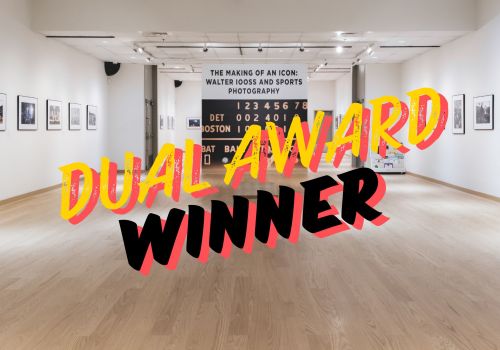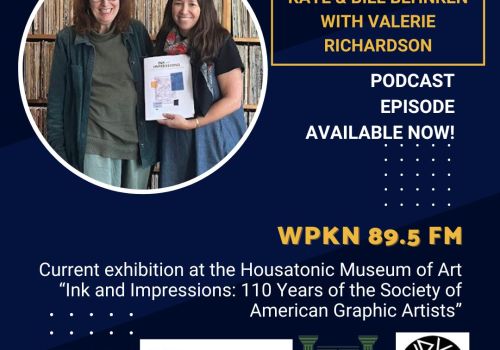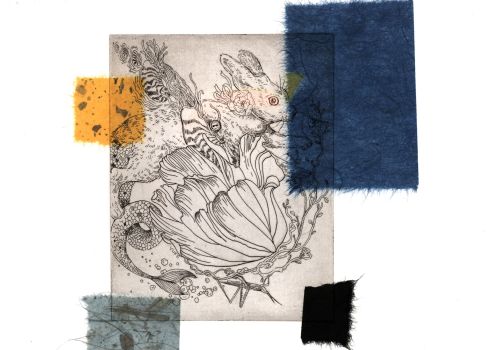
AGENT ORANGE: Collateral Damage, ICONS FOR A NEW CENTURY 2005
AGENT ORANGE: Collateral Damage, ICONS FOR A NEW CENTURY
Icons for a New Century Agent Orange: Collateral Damage in Viet NamSee what the critics
are saying about the current exhibition at the HMA. November 17 through January 13, 2006
|
||
|
Icons for a New
Century
Artists Matt Ernst and Rob Roy offer a look at the symbols that exemplify a new era in our history. Half way through the first decade of a new century and we can already count the conflicts that mark this new millennium. According to the web-site Global Security “much of the world [is] consumed in armed conflict or cultivating an uncertain peace. As of mid-2005, there were eight major Wars under way (down from 15 in 2003), with as many as 24 “lesser conflicts” ongoing with varying degrees of intensity. These conflicts are fueled by racial, ethnic or religious animosities as by ideological fervor.”
Matt Ernst and Rob Roy engage and challenge viewers by layering a multitude of meanings. These paintings are not “narratives” in the sense of telling a particular story but by using these disparate symbols they nevertheless impart meaning and force the viewer to ask questions about our society’s values, goals, methods and policies. >Matt Ernst lives and works in New York City. He received his degree from the Museum of Fine Arts School in Boston. His work has been exhibited in New York, Florence, Vienna and Barcelona. Rob Roy lives in Massachusetts and teaches at Montserrat College in Beverly. He received his MFA from Yale University, School of Art and Architecture in 1971. His work is in numerous private and public collections including the Museum of Modern Art in New York. |
Agent
Orange : Collateral Damage in Viet Nam The startling black and white photographs by Magnum photographer Philip Jones Griffiths demonstrate for us the horrifying consequences of using the chemical Agent Orange during the Viet Nam war. The children in these photos were born almost 30 years since the US withdrew its troops from that country but what remained was the toxic chemical Dioxin which was used in the defoliant known as Agent Orange. The genetic mutations caused by Agent Orange continue to wage war against the civilians who continue to drink contaminated water and grow food in the contaminated soil. Agent Orange chronicles the lives of those poisoned by the defoliant used to denude the forests and jungles of Viet Nam. The defoliation military strategy was called “Operation Ranch Hand,” and according to Griffiths’ book, took as its motto “Only We Can Prevent Forests” that were applied to the sides of the aircraft used to spray the deadly chemical. Defoliation, the “Chemical Scythe,” affected huge swaths of land. Dioxin is one of the most toxic substances ever produced and one that continues to impact the lives of Vietnamese children today. Viet Nam vets suffered from the exposure to this chemical as well, contracting rare forms of cancer, lupus and other diseases but the link to Agent Orange was initially strongly denied by the American government but eventually $180 million dollars was awarded by the manufacturers of the chemicals through the US Courts. Dioxin contamination also affects the reproductive system, the endocrine matrix, the immune system, and the nervous system. But the most dramatic affect takes place in the womb as it alters the cellular activity and produces deformed fetuses. In Viet Nam the human toll continues to be ignored. Most babies die shortly after birth but others live with missing or deformed limbs, mental retardation, without eyes, with internal organs on the on the outside of their bodies, spina bifida and cerebral palsy. These photographs are Philip Jones Griffiths’ tribute to their grace and fortitude. Philip Jones Griffiths was born in Rhuddian, Wales in 1936. Griffiths was studying pharmacy and working as a part-time photographer for The Manchester Guardian, and the moved to The Observer newspaper. He covered the Algerian war in 1962 and has since covered major conflicts around the world. In 1971 his groundbreaking book Vietnam, Inc. was published and is widely recognized as changing US attitudes to the war. |
|
|
Lectures A
Retrospective Look at the Tragedy of Agent Orange, a
lecture by Arthur W. Galston Arthur W. Galston is the Eaton Professor Emeritus of Botany in the Department of Biology at Yale University and also Professor Emeritus of Forestry with the School of Forestry and environmental Studies. The author of more than 300 scientific articles in refereed journals and more than 50 articles on science and public policy, Professor Galston is a biologist specializing in chemical control of plant growth. His concerns about the social impacts of science led to his participating in a successful campaign to terminate the spraying of Agent Orange in Vietnam (1970), becoming a charter member of the Hastings Center, his membership on the Federation of American Scientists' Committee on Biological Warfare, and his involvement in the Society for Social Responsibility in Science, which he served as president in the mid 1970s. One Significant
Ghost: Stories from Viet Nam Diane Fox will be at the Housatonic Museum of Art Saturday, November 19 at 2pm to speak about her work with the disabled poor including those suffering from the effects of Agent Orange. This lecture is to augment the exhibition of select black and white photographs from the book Agent Orange: Collateral Damage in Viet Nam by Magnum photographer Philip Jones Griffiths. Diane Fox, Teaching Fellow, Asian Studies program at Hamilton College in Clinton, New York earned a master’s from Portland State University and is working toward her doctorate at the University of Washington. She was most recently coordinator of the Agent Orange educational project for the Fund for Reconciliation and Development. Fox has written for Education About Asia, Viet Nam News and contributed to Synthetic Planet: Chemical Politics and the Hazards of Modern Life. While at Portland State she taught various courses on Viet Nam history. This event is free and the public is cordially invited to attend. |
||
Press Releases Archive
Connecticut Post December 10, 2005
Agent Orange discoverer tries to make amends
BRIDGEPORT — Arthur W. Galston did not invent Agent Orange.
He didn't even get credit for its model, a defoliant he developed as a University of Illinois grad student in 1943 before he rushed off to war without getting a patent.
Yet four decades after the toxic compound began ravaging plants, and then people, Galston speaks about the topic like a man out to make amends.
"I feel this responsibility," Galston, who lives in Orange, said recently during a lecture at Housatonic Community College art gallery.
At the HCC art gallery, surrounded by a black-and-white photo exhibit depicting people poisoned by Agent Orange, Galston urged those in the small audience planning careers in science to know that anything they do could some day be used in a harmful way.
"Look at me — I was a botanist," said Galston. "I inadvertently found something which, further developed, was used as an instrument of war."
All these years later, Galston, 85, a scientist and professor emeritus at Yale University, teaches bio-ethics, a discipline that examines the social and ethical consequences of scientific research.
His lecture drew people new to the topic as well as people fighting to get reparations for the victims of Agent Orange, a chemical defoliant used to clear the jungle during World War II and the Vietnam War.
It was later blamed for cancer and a host of other ailments.
"I never knew," said Katrina Haravata, 19, a Housatonic student originally from the Philippines, who came to hear Galston after her curiosity was sparked by the photo exhibit.
Galston told her Agent Orange was named after the orange stripe painted around the 55-gallon drums used to store the chemical.
Also attending were Hau Nguyen and Tuan Le, journalists from a Vietnam news agency; Thu Nguyen, a Vietnamese national who suspects family members were contaminated with Agent Orange; and Constantine Kokkoris, an attorney representing Vietnamese individuals suing the Dow Chemical Co. and others over Agent Orange.
The case was dismissed in a Brooklyn, N.Y., federal court in March and is now being appealed. Galston is sympathetic but questions whether they can prove their case in court.
"I will do everything I can to help, but it's a tough job. It's not going to be easy to convince a court of law," he said.
Although Vietnamese scientists have good statistical data to show people in villages that were sprayed with Agent Orange have much higher rates of cancer and malformed babies, the scientific data to confirm that Agent Orange was the cause are scarce.
"You cannot experiment on humans," he said.
Agent Orange got its start as a defoliant during World War II when scientists discovered they could regulate the growth of plants through the infusion of various chemicals and hormones. The military was out to get rid of dense forests that often shielded the enemy.
Galston, a graduate student working on a doctorate at the University of Illinois, wasn't trying to kill plants, just hasten the growth of soybeans in Illinois' short summers.
He was successful in finding a compound that produced flowering two weeks earlier. But he discovered if he used too high a concentration, it also made the leaves fall off as he noted in his thesis before heading off to serve in World War II.
He returned to find that someone else had read his work and had the idea patented. His compound and others were the basis for Agent Orange.
By the time the Vietnam War arrived, it was ready for use. Millions of gallons were sprayed over Vietnam from 1961 to 1970, exposing the Ho Chi Minh trail and other enemy passageways and causing a tremendous amount of ecological damage.
Valuable teak trees and mangrove swamps along the estuaries of the delta south of Saigon were stripped and remain so to this day.
Once aware of the ecological damage the chemical was causing, Galston and other scientists went to Vietnam.
They began to wonder about the effects on people and animals. When they returned, a committee was formed to study the impact of the spraying.
A November 1967 study Galstonled was unable to come to firm conclusions about Agent Orange but advised its continued use might "be harmful" and have unforeseen consequences.
The spraying was stopped in 1970 after Galston and others successfully appealed to the Nixon administration.
"That was an important victory," he said, adding that the war continued until 1975, and the decision to stop using Agent Orange "probably averted a good deal of damage."
Still, damage has run into the billions. To this day, the United States has not spent $1 in aid to restore any of the affected areas, Galston said.
"I consider it a matter of conscience that our wealthy country, having produced so much damage, should take some action," he said.
In 1990, Galston helped to organize a Bioethics Project at Yale and is a member of the Society for Social Responsibility in Science. He has had more than 300 scientific articles published.
"Agent Orange: Collateral Damage in Vietnam," a photographic exhibit by Magnum photographer Philip Jones Griffith, runs through Jan. 13 in the Housatonic Museum of Art.
Linda Conner Lambeck, who covers regional education issues, can be reached at330-6218.


